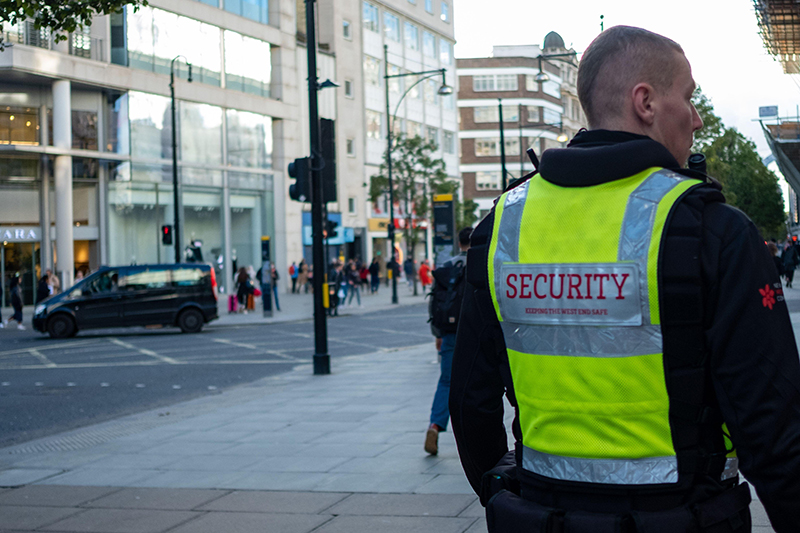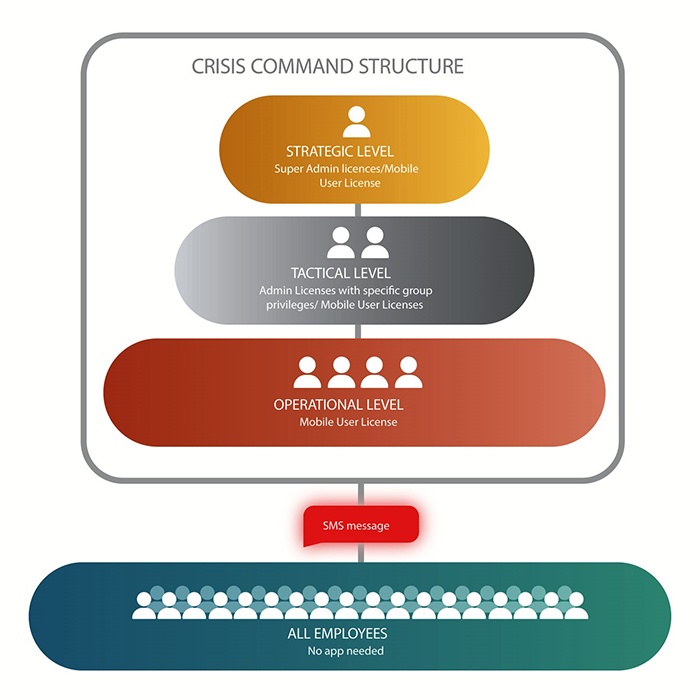The recent pre-legislative scrutiny of the Terrorism (Protection of Premises) Bill – also known as the Protect Duty or Martyn’s Law, in tribute to Martyn Hett, one of the 22 victims killed in the 2017 Manchester Arena terrorist attack – has tightened the focus on the practicalities and proportionality of the draft legislation that aims to improve the safety and security of public venues.
In anticipation of a review of the new law’s requirements, and in response to concerns by risk management professionals alert to their redefined responsibilities, we invited views on the Bill’s expected impact on the security industry. Hunter Seymour reports for IFSEC Insider.
IFSEC Insider long-read – Key takeaways
- Growing responsibility and coverage expected of the private security industry putting new pressures on experience and training of providers and officers
- Pre-legislative scrutiny from the Home Affairs Select Committee and those close to the industry have raised questions around the proportionality and potential impact of the Terrorism (Protection of Premises) draft Bill
- Enhanced training and communication methods will be required to meet new levels of compliance and prevent failures in response to crises such as that found on the night of the Manchester Arena attack in 2017
- Proponents of the Bill argue scrutiny is “misguided”, pointing to the well-regarded free training available online and requirements aren’t overly burdensome given the importance of its objectives
Security providers as ‘frontline’ national defenders?
For this overview to be truly inclusive, it’s useful to begin at the highest level of National Security. Blue Light Emergency Services, such as the Police and Fire Services, are included in the UK’s Critical National Infrastructure – an infrastructure “now largely in the hands of private enterprises that are driven by commercial considerations . . . [whose decisions] may have wider implications for national security.”
This statement from the UK Government’s Intelligence and Security Committee would seem only a step away from an admission of a recognised devolution of responsibility that sees national security passing to ‘the hands of private enterprises’. In other words, a sector identified as a possible proxy for the state’s first responders.
This extension of national security, which calls upon the events industry to be trained in counter terrorism to protect public venues, is echoed in a recent Review of London’s Preparedness to Respond to a Major Terrorist Incident.
The review makes clear that the Metropolitan Police Service foresees, within the scope of Protect Duty, significant increases in the number of PALS (Publicly Accessible Locations) qualifying for expert training on protective security led by the Met’s CTSAs (Counter Terrorism Security Advisers).

Image credit: William Barton/AlamyStock
Are security companies a stand-in for policing provision?
The MD of TM-Eye Private Investigations, ex-Met Detective Chief Inspector David McKelvey, conveys the deeper reality behind these Protect Duty developments.
“The security industry in many areas has evolved to become the ‘frontline’ for the public in providing core policing provision. The lack of visibility of police on the streets has meant that security companies… have had to step up to deal with many of the issues that policing once dealt with.
“The recent comments from His Majesty’s Chief Inspector of Constabulary, Andy Cooke, about the police withdrawing from dealing with those with mental health issues is a prime example. It is a policing issue that has to be dealt with, managed and resolved. It requires experience, training and knowledge of the support services available, together with communication skills and old fashioned ‘police instinct’.
“Martyn’s Law has placed a legal requirement on venues and the security industry to ensure that staff are adequately trained to meet potential future terrorist incidents. This should also include incidents of crime and activist group protest. That undoubtedly means that there is an additional need for enhanced training, which comes at a cost to the service provider. It also impacts directly on the costs of the business, such as Insurance premiums, and even the ability to arrange suitable cover.
“Many security companies will not have this cover available and will use inexperienced staff, putting the venue, client and public at real risk, should an incident occur. Security companies are now required to undertake a policing function and need to adapt accordingly. The authorities must likewise learn to work in partnership to support that function.”
Security of venues defined by MI5
These remarks highlight many pressing issues currently debated by the security industry, including attainment of an effective balance in the move towards convergence of physical security and virtual cyber security.

Venues over 800 capacity across the UK are set to fall into the ‘enhanced’ tier under the proposed scope of the Bill
They also reflect a widespread unease that the ‘boots-on-the-ground’ strength of UK’s Critical National Infrastructure, including the Army, has shrunk to give way to a growth in cyber warfare.
This is a view endorsed by General Sir Tim Radford, second-in-command of NATO’s military arm: “If someone comes towards you with a tank, you can’t cyber it away.” A former Chief of the Defence Staff, Lord Houghton, says: “We don’t have a properly functioning reserve… it’s a national embarrassment.”
So, if it is the case that the UK security industry is to become more an adjunct to the ‘National Resilience’ defences (it should be noted that MI5’s Joint Terrorism Analysis Centre defined the range of public venues specified in the Protect Duty Bill), then the cost burdens for events management, such as the expense of training and insurance, present additional challenges.
“Disproportionate” cost burden of new statutory duties?
Invited to assess additional costs arising from Protect Duty, Jane Randell, Senior Counsel at one of the UK’s top legal firms, Farrer & Co, says:
“The government has done its own calculations and expects venue owners to incur costs of £2,000 (defrayed over a 10-year period) in respect of each standard duty premises. The additional costs in respect of enhanced duty premises have been put at over £80,000.
“Insurance costs have been excluded from these calculations and so costs faced by private operators could be higher; either because venue owners deem it necessary to take out additional terrorism protection insurance off the back of their new statutory duties, or if insurers increase premiums because they consider the financial cost of a terrorism attack (or failing to prepare in accordance with the Act) to be more substantial.”
Indeed, the pre-legislative Scrutiny Report concludes: “The cost on standard and enhanced tier premises of implementing these proposals, estimated by the Government, is disproportionate to the level of threat, particularly for those small and medium-sized premises captured in the standard tier.”
The British Insurers’ Brokers Association also states: “We support the aims of the [proposed] legislation but ask for proportionality in its application and for sufficient time to be allowed for businesses to prepare for the Duty. It is likely to impose new liabilities on businesses and our members will help to advise clients and source appropriate cover for these from insurers where possible.”
Fulfilling the responsibility – “Major issues around quality and retention of security personnel”
There is also concern around the numbers and capabilities of security professionals to fulfil the responsibilities the Bill may require – especially for venues in the enhanced tier category (at the time of writing, over 800 capacity).
CEO of the Night Time Industries Association and chair of the UK Door Security Association says: “The Security Industry Authority (SIA) has reported record numbers of applications for door security roles but they do not give a true picture of active badges or usage”
He believes there is a major issue around the quality and retention of security personnel. He also airs frustration about the SIA Approved Contractor Scheme (ACS): “The current security supply sector has some issues not only within the Private Security Act itself, but with the current systems in place around standards, both for operatives and supply companies.”

The BSIA reportedly pointed out “there is a common assumption that a security guard is trained in counter-terrorism initially, and they are not”. Security guards, the Committee was told, are “trained on the basics” and the “UK security industry has one of the lowest entry thresholds in Europe for training.”
Such doubts are reinforced by the Scrutiny Report’s emphasis on the need for appropriate protection training for relevant workers within the Protect Duty’s scope, and the Report questions the rigour of a Regulator’s authority with powers of inspection and enforcement
ProtectUK and CONTEST counter-terrorism strategies
Notwithstanding these apprehensions within the industry, the Home Secretary, Suella Braverman, recently launched the UK’s updated counter-terrorism strategy, CONTEST.
She explained: “In direct response to the Manchester Arena bombing, we will ensure public venues are better prepared and protected against terrorist attacks… To support those protecting their premises against terrorism, the Home Office and partners will continue to make free guidance, advice, and training available through ProtectUK.”
Operational discretion & command structures: Tackling a failure of communication
Enhanced training is prioritised in the objectives of Dave Russel, Chief Fire Officer of GMFRS (Greater Manchester Fire and Rescue Service), in response to the Manchester Arena Inquiry into the operational failure of GMFRS due to the indecision of its commanders at the time of the terrorist attack.
He emphasised the importance of being capable and prepared to take decisions “with discretion” and to “react intelligently” to events and not be “bound by the rigidity of policy procedure”. In other words, first responders should take the initiative.
As explained by Russel, the operational failure of first responders in an emergency can be attributed to indecisive channels of communication in the chain of command.
That these channels can be compromised is a hazard risk managers are alerted to by Tony Watson, Founder and CEO at Callmy, whose Callmy Alert service supports business continuity and security in crisis situations.
During a webinar hosted by IFSEC Insider, Watson explained that, after a crisis incident, communications can be overwhelmed and there can be “a huge spike in social media”. Misinformation and disinformation can appear on popular media sites which can undermine the messaging of the true state of emergency to those affected.
The aim of Callmy Alert is to ensure that, if internal IT systems are compromised, the delivery of messages to end users’ desktops, tablets and smartphones can continue to flow.
Targeted messaging
In addition, Peoplesafe, provider of employee protection technology, identifies several solutions to mitigate communications crises, noting that a “primary objective” of Martyn’s Law is to address poor communication channels. The company explains:
“In crisis situations, efficient communication and mobilisation are critical. The Gold-Silver-Bronze (GSB) Command Structure, commonly utilised by emergency services, provides a framework for operational responses to critical events. Peoplesafe Alert aligns with this structure, allowing organisations to communicate effectively across different response levels by using predefined message groups based on the recipients’ level within the command structure.
“Under the Bill, organisations are required to put measures in place to reduce the risk of physical harm to individuals caused by terrorism. During a crisis, everyday communication platforms may become overwhelmed or compromised, making it difficult to disseminate accurate information and provide safety instructions. And in today’s digitally connected world, sophisticated attacks increasingly target cyber networks, reducing the organisation’s ability to communicate with staff and visitors.
“Mass communication systems address these challenges by offering a secure standalone platform that remains operational even if the underlying communication infrastructure is compromised.
“In the event of a terror incident, regulators may review an organisation’s response efforts to evaluate the steps taken to protect the community. The audit capabilities of a dedicated mass communication platform allow regulators to view what messages were sent, the timing of each message, the number of recipients, and how they each responded. This provides organisations with evidence that they took reasonably practicable steps to reduce the impact of such incidents and avoid potential fines.”
Are the requirements really as burdensome as the Scrutiny Report lays out?
But the final word in this brief overview of the impact of Protect Duty on the security industry must, surely, be accorded to Figen Murray, mother of Martyn Hett, and tireless campaigner for Martyn’s Law. The Martyn’s Law campaign has called throughout for venues to provide staff with freely available counter-terrorism training and to have a counter-terrorism action plan.
In response to the Scrutiny Report’s reservations, she replied on the day of its publication by stating the report’s views were “misguided.” as to the question of a “disproportionate” burden on the tier of smaller venues.
On BBC Radio 4’s the Today Programme, Figen said: “All we are asking is that, for the smaller venues of 100-to-799 capacity, they train their staff in the free-of-charge, 45-minute e-learning ACT training and, literally, look at their premises and identify a safe exit or a route to a safe place to invacuate.”

Figen Murray
Editor’s note: ACT Security is free, specialised training for frontline security operatives, developed by the SIA in partnership with the National Counter Terrorism Security Office and the Centre for the Protection of National Infrastructure (now the National Protective Security Authority).
A cautionary postscript
Nick Aldworth, Director of Risk 2 Resolution, former Detective Chief Superintendent and co-campaigner for Martyn’s Law, writes:
“It wasn’t until two years after the Arena attack that the Martyn’s Law campaign was created to try and give real meaning to the need for the Protect Duty. It came about from an experience that Figen had, when her tickets weren’t even checked going into a Manchester concert, let alone her bag.
“For all intents and purposes, the weaknesses in security practices that two years earlier had contributed to the murder of 22 people at the Arena, were being played out only a few miles away within a city that was probably more tuned into terrorism than any other.”
He concludes, “Most problems are resolved by employing good people, briefing them well and supporting them with effective supervision. It really isn’t rocket science.”
Find out more about the journey to the Terrorism (Protection of Premises) Bill and Martyn’s Law campaign, from Figen Murray on the IFSEC Insider podcast, recorded in April 2023…



A very interesting article with lots to think about.
The UK government’s increasing emphasis on the self-reliance of its citizenry in the face of terrorism is perhaps not so sinister as this article suggests. Does the public transport in the Greater Paris area, for example, promote paranoia with cautionary anti-terrorist slogans similar to ’See it. Say it. Sorted’? Such slogans as ‘C’est le moment d’avoir la tête dans le sac’ are intended to combat the nuisance of unattended items, which attract the systematic intervention of anti-terrorist bomb-disposal units. Another point about police initiative: It should be remembered that when four young boys died last December from falling into a… Read more »